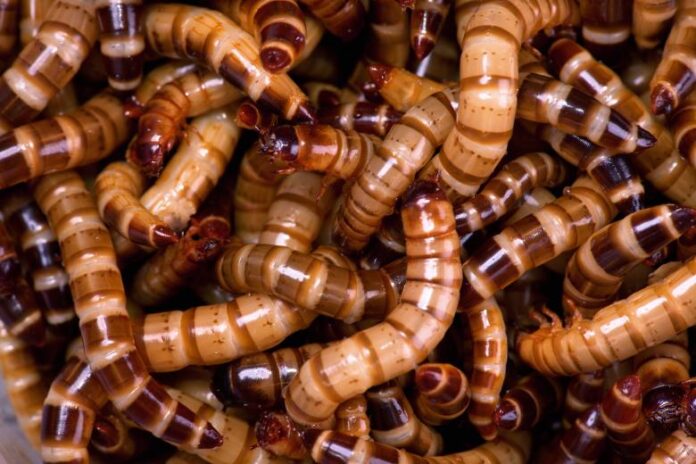For most people, maggots are a nightmare come true. You would never want to have them around your kitchen or anywhere else on your property. They are filthy and slimy. Grubs can cause many problems in the house, and you should eliminate them before they spread to other areas.
In case you’ve been scouring the web looking for a solution to your home maggot infestation, our comprehensive guide below will teach you precisely what maggots are, where they come from, how to inspect for them, how to treat them properly, and how you can prevent an infestation from happening again.
Are maggot worms harmful?
Maggots, the larval stage of flies, have been known to cause health concerns for humans and animals. However, despite their unsavory reputation, maggots are not inherently harmful. In fact, they can be beneficial in some situations.
For example, maggots have been used in medical treatments for over 100 years. Maggot therapy, also known as larvae therapy, involves using sterile maggots to clean and debride wounds. The maggots feed on dead tissue, effectively removing it and allowing healthy tissue to grow. This therapy is effective in treating a variety of wounds, including diabetic foot ulcers and pressure sores.
On the other hand, maggots can also cause harm. If they infest food, they can contaminate it and make it unsafe to eat. Maggots can also spread diseases, such as food poisoning and dysentery if they come into contact with open wounds or mucous membranes. In addition, they can cause distress and anxiety, particularly if found in homes or on pets.
Identification of maggots like worms in house.
You must identify the type of pest you are dealing with and make sure that they are larvae before beginning any pest control plan. Time and money can be wasted if the wrong treatment methods are used due to incorrect identification. We will explain what maggots are, what they look like, and where they come from.
- They are the larvae of flies. House flies and blowflies are more commonly the larval carriers of maggots around homes. The maggot larvae thrive in dirty and unhygienic environments and can do great harm to anyone who consumes them through unclean foods.
- The eggs of a fly turn into larvae and hatch within seven to twenty hours after being laid. When the larva hatches, maggots emerge and begin eating anything they can get their hands on, especially rotting and unsanitary food.
- A typical larva looks like a tiny cream-colored worm, and the largest can grow up to 20mm long, or 3/4 of an inch long.
- In addition to their lack of legs, maggots possess two little hooks that serve as their mouthparts to feed.
- Maggots and flies can become a problem at any time of the year, but more so in the spring and summer when flies are more active.
- A maggot lives in this phase for about 5 to 6 days before becoming a pupa and eventually becoming an adult fly.
Where to inspect maggots like worms in house?
Larvae are commonly found in areas containing rotting food, decaying organic matter, and filth. Often, they are found in kitchen pantries in spoiled food, pet food, and rotting fruits and vegetables. Garbage cans that are not sealed or trash that hasn’t been thrown out for a while can also contain maggots.
How to get rid of maggots like worms in house?
After you have confirmed maggot activity, it is time to begin treatment. In addition to treating maggots, the treatment will also target adult flies. Once you have control overflies, you will have control over maggots. Before applying any of our recommended products, it would help if you first practiced IPM (integrated pest management), which involves sanitizing your kitchen and making modifications to discourage maggot activity.
Step 1: Sanitize your house.
You have likely found the source of why you have found maggots. Larvae infestations in your home are typically due to decomposing food and filth. Find that filth source and dispose of it, then perform thorough sanitation. The kitchen is one of the main areas to focus on since this is frequently where food can spoil and trash can pile up, which attracts flies and maggots. Get rid of any old food, take out the garbage, and clean your tabletops and counters. Mop the floors and remove any moisture sources. Sanitizing your kitchen is critical because pesticide products won’t do the job if the area isn’t clean.
Read more: Each And Everything You Need To Know About Gas Fireplace Maintenance
If you find maggots in your garage or basement, sweep and mop the area thoroughly, remove any decaying filth, and throw it in a sealed trashcan outside the home with a tight-fitting lid. In cases where the maggot issue is primarily outdoor, clean up the areas where flies have been seen, such as around feces of pets, spoiled dog food, and other such filth.
Step 2: Use Flex 10-10 and Martin’s IG Regulator.
Following sanitization, you will need to use a synthetic pyrethroid product Flex 10-10 and Martin’s IG Regulator to treat the larvae. Martin’s IG Regulator is an insect growth regulator that disrupts the life cycle of flies and maggots by hampering the development of their eggs, larvae, and adults. Flex 10-10 is a professional-grade liquid insecticide that treats flies and many other pests. In addition to killing maggots immediately, this combination prevents flies from reproducing.
Both Flex 10-10 and Martin’s IG Regulator can be used outdoors and indoors. They can also be mixed and applied locally using a hand pump sprayer. The amount for Flex 10-10 is 6.4 fl. cup. Each gallon of water needs a 6.4 fl. cup. To make Martin’s IGR, use 1 oz. For every gallon of water. Martin’s IG Regulator and Flex 10-10 can be used to treat up to 1,500 square feet. Ft.
If you are using a pump sprayer, fill it halfway with water and then fill it with the appropriate amount of Flex 10-10 based on the size of the treatment area. The remaining half-gallon of water should be added to the sprayer and then shaken to mix the solution. After the ingredients have been well mixed, add Martin’s IG Regulator to the mixture and agitate again. Once your sprayer has produced a low-pressure spray, you are ready to apply.
Step 3: Use Pyramid Aerosol
We recommend Pyramid Aerosol for killing maggots or flies found in tighter spaces or structural voids. Pyramid is an insecticide containing pyrethrum used in cracks and crevices to kill flies and comes with a straw to apply it. Pyramid has no residual action, so it is used directly to spray pests, delivering a quick, lethal knockdown.
Use Pyramid Aerosol by attaching the straw applicator tip to the Pyramid nozzle and applying to tight spaces and crevices. Pyramid Aerosol can also be used without the nozzle to treat open areas as a space spray, such as above trash cans.
Conclusion
A maggot is a typical fly larva. Maggots resemble worms because of their soft bodies and lack of legs. Typically, their heads are smaller and can fold back into their bodies. Maggots are typically described as larvae that feed on the decaying tissue remnants of plants and animals.
FAQs (Frequently Asked Questions)
- What is mistaken for maggots?
Termite larvae are even more similar to maggots, although they are usually smaller, around 1/10 inch long. Although the juvenile termite lacks the hard shell of the adult, it resembles the adult in every other respect.
- Are there maggot-like worms?
The worms are likely Indian meal moth larvae if they’re crawling up walls and along with ceilings in your kitchen. Other white worms (of that size) found in kitchens are fly larvae, but they don’t have legs.
Apart from this, if you are interested to know more about COST OF LIVING IN LONDON then visit our BUSINESS category.











